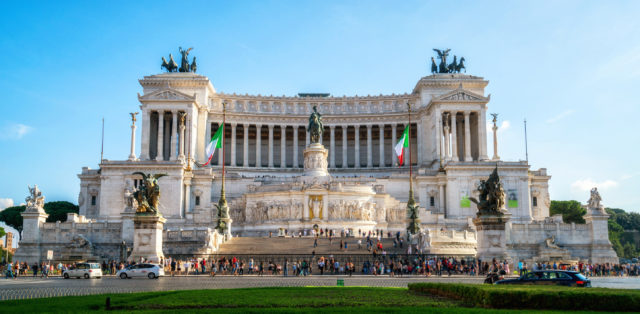
The Italians have stitched together yet another government, this one a left-right “contract” they call a yellow/green alliance. The two leading parties, The (formerly “Northern”) League and the Five Star Movement disagree about such basic issues as refugees, taxation, and whether Italy should stay in the eurozone. It is hard to imagine the government lasting very long, and already there is a high level of public conflict.
Most of the analyses miss the central point: Italian unification did not succeed, and today, as in the 19th century, it is fair to describe Italy as more “a geographic expression” than a country whose residents have a strong sense of national identity. Thus, regional and civic conflicts typically overwhelm efforts to make national policy, and federal governments are inherently unstable.
Italy was formed in the middle of the 19th century, under the auspices of the King of Piedmont/Savoy and his brilliant counselor Camillo Cavour. It was a hodge-podge of governing systems and cultures, since component parts had been under French, Austro-Hungarian and Spanish rule for centuries.
Ten years later, in 1870, the Papal States were added. Naples and Sicily—also known as the Kingdom of the Two Sicilies—were conquered. But they did not ever truly assimilate. We can see this simply by traveling from north to south. Everybody speaks basic Italian; however, Neapolitans speak their own dialect and Sicilians often communicate in a distinctly separate language. I wrote a book about Naples trying to explain its uniqueness, and others have done the same for places like Florence and Venice.
Insofar as there has been real national unity, it was imposed, first by Benito Mussolini who made extensive use of national radio broadcasts, and then by the U.S. Army, which fought the Nazis from Sicily to Milan. There are still several American military bases in Italy, from north to south.
When I first went to Italy in the mid-1960s, it was widely expected that the dialects would die out. This does not seem to have occurred, although common Italian does dominate mass communications, whether printed or broadcast. Nonetheless, the divisions remain strong, in some ways dominant.
If you ask a Tuscan where Africa starts, he will tell you “just north of Rome.” If you ask a Roman, he will answer “just north of Naples.” A Neapolitan might well tell you “right here.” And laugh.
The north-south divide is the most powerful one. Northerners love to observe that the south has received lots of aid, from the central government, from the EU, and from the United Nations. It is still impoverished. On the other hand, the Veneto has received no aid, and is one of the richest regions in Europe, even though it hasn’t much in the way of natural resources. Well, sure, once you understand that the north has a tradition of wealth creation, while that function in the south is monopolized by organized criminals. And while the legendary southern mafias are now global bands, they don’t get as much popular support in the north.
So, don’t think “Italy.” Think in terms of a variegated land where different cultures more or less get along, but policy centers around the regions, not Rome.
Michael Ledeen, Ph.D., is Freedom Scholar at the Foundation for Defense of Democracies.




